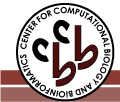| General information | | DisProt: | DP00073 | | Name: | Thymidylate synthase | | Synonym(s): | TYSY_HUMAN
TSase
TS
EC 2.1.1.45
| | First appeared in release: | Release 3.0 (02/17/2006) | | UniProt: | P04818 | | UniGene: | Hs.592338 | | SwissProt: | TYSY_HUMAN | | TrEMBL: | | | NCBI (GI): | 136611 | | Source organism: | Homo sapiens (Human) | | Sequence length: | 313 | | Percent disordered: | 27% | | Homologues: | |
| Native sequence |
10 20 30 40 50 60
| | | | | |
MPVAGSELPR RPLPPAAQER DAEPRPPHGE LQYLGQIQHI LRCGVRKDDR TGTGTLSVFG - 60
MQARYSLRDE FPLLTTKRVF WKGVLEELLW FIKGSTNAKE LSSKGVKIWD ANGSRDFLDS - 120
LGFSTREEGD LGPVYGFQWR HFGAEYRDME SDYSGQGVDQ LQRVIDTIKT NPDDRRIIMC - 180
AWNPRDLPLM ALPPCHALCQ FYVVNSELSC QLYQRSGDMG LGVPFNIASY ALLTYMIAHI - 240
TGLKPGDFIH TLGDAHIYLN HIEPLKIQLQ REPRPFPKLR ILRKVEKIDD FKAEDFQIEG - 300
YNPHPTIKME MAV
|
| Functional narrative |
Thymidylate synthase (TS) catalyzes the reductive methylation of dUMP to form dTMP, a reaction that is essential for maintenance of nucleotide pools during cell growth. Since the enzyme is indispensable for DNA replication in actively dividing cells, it is an important target for cytotoxic drugs used in cancer chemotherapy. The amino terminal 27 residues, unique to human TS, contain 8 proline residues, and is likely to be flexible prior to substrate binding. Residues at the N-terminal end of the molecule, particularly Pro2, play an important role in governing the half-life of the enzyme. This region is capable on its own of destabilizing an evolutionarily distinct TS molecule that normally lacks this domain, indicating that it functions as a degradation signal.
|
| Map of ordered and disordered regions |


Note: 'Mouse' over a region to see the start and stop residues. Click on a region to see detailed information.
|
| Region 1 | | Type: | Disordered | | Name: | N-terminal | | Location: | 1 - 27 | | Length: | 27 | | Region sequence: |
MPVAGSELPRRPLPPAAQERDAEPRPP | | Modification type: | Native
| | PDB: | | | Structural/functional type: | Function arises via a disorder to order transition
| | Functional classes: | Molecular assembly
| | Functional subclasses: | Protein-protein binding
| Detection methods:
- X-ray crystallography (pH: 7; Ammonium sulfate 1.5 M; Beta-Mercaptoethanol (pH 6.5-8.0) 20 mM; Tris-HCl buffer; wavelength 0.9 A)
| References:
- Phan J, Steadman DJ, Koli S, Ding WC, Minor W, Dunlap RB, Berger SH, Lebioda L. "Structure of human thymidylate synthase suggests advantages of chemotherapy with noncompetitive inhibitors." J Biol Chem. 2001; 276(17): 14170-7. PubMed: 11278511
- Schiffer CA, Clifton IJ, Davisson VJ, Santi DV, Stroud RM. "Crystal structure of human thymidylate synthase: a structural mechanism for guiding substrates into the active site." Biochemistry. 1995; 34(50): 16279-87. PubMed: 8845352
| Comments:
|
| Region 2 | | Type: | Disordered | | Name: | | | Location: | 93 - 132 | | Length: | 40 | | Region sequence: |
KGSTNAKELSSKGVKIWDANGSRDFLDSLGFSTREEGDLG | | Modification type: | Native
| | PDB: | | | Structural/functional type: | Function arises via a disorder to order transition
| | Functional classes: | Molecular assembly
| | Functional subclasses: | Protein-protein binding
| Detection methods:
- X-ray crystallography (pH: 7; Ammonium sulfate 1.5 M; Beta-Mercaptoethanol (pH 6.5-8.0) 20 mM; Tris-HCl buffer; wavelength 0.9 A)
| References:
- Schiffer CA, Clifton IJ, Davisson VJ, Santi DV, Stroud RM. "Crystal structure of human thymidylate synthase: a structural mechanism for guiding substrates into the active site." Biochemistry. 1995; 34(50): 16279-87. PubMed: 8845352
| Comments:
|
| Region 3 | | Type: | Disordered | | Name: | | | Location: | 142 - 157 | | Length: | 16 | | Region sequence: |
FGAEYRDMESDYSGQG | | Modification type: | Native
| | PDB: | | | Structural/functional type: | Function arises via a disorder to order transition
| | Functional classes: | Molecular assembly
| | Functional subclasses: | Protein-protein binding
| Detection methods:
- X-ray crystallography (pH: 7; Ammonium sulfate 1.5 M; Beta-Mercaptoethanol (pH 6.5-8.0) 20 mM; Tris-HCl buffer; wavelength 0.9 A)
| References:
- Schiffer CA, Clifton IJ, Davisson VJ, Santi DV, Stroud RM. "Crystal structure of human thymidylate synthase: a structural mechanism for guiding substrates into the active site." Biochemistry. 1995; 34(50): 16279-87. PubMed: 8845352
| Comments:
|
| Region 4 | | Type: | Disordered | | Name: | | | Location: | 107 - 128 | | Length: | 22 | | Region sequence: |
KIWDANGSRDFLDSLGFSTREE | | Modification type: | Engineered
| | PDB: | 1HW3:A, 1HW4:A | | Structural/functional type: | | | Functional classes: | | | Functional subclasses: | Substrate/ligand binding
| Detection methods:
- X-ray crystallography (PEG 4000 (15-30%(weight/volume)); saturated ammonium sulfate (42-50%); Tris-HCL (pH 8.5) 100 mM)
| References:
- Phan J, Steadman DJ, Koli S, Ding WC, Minor W, Dunlap RB, Berger SH, Lebioda L. "Structure of human thymidylate synthase suggests advantages of chemotherapy with noncompetitive inhibitors." J Biol Chem. 2001; 276(17): 14170-7. PubMed: 11278511
| Comments:The protein used in the Phan paper had an N-terminal extension of 42 residues. It was noted that these residues have no significant effect on the protein structure.
|
| If you have any comments or wish to provide additional references to this protein or its disordered region(s), please click here to e-mail us. |
Disprot-footer
|










